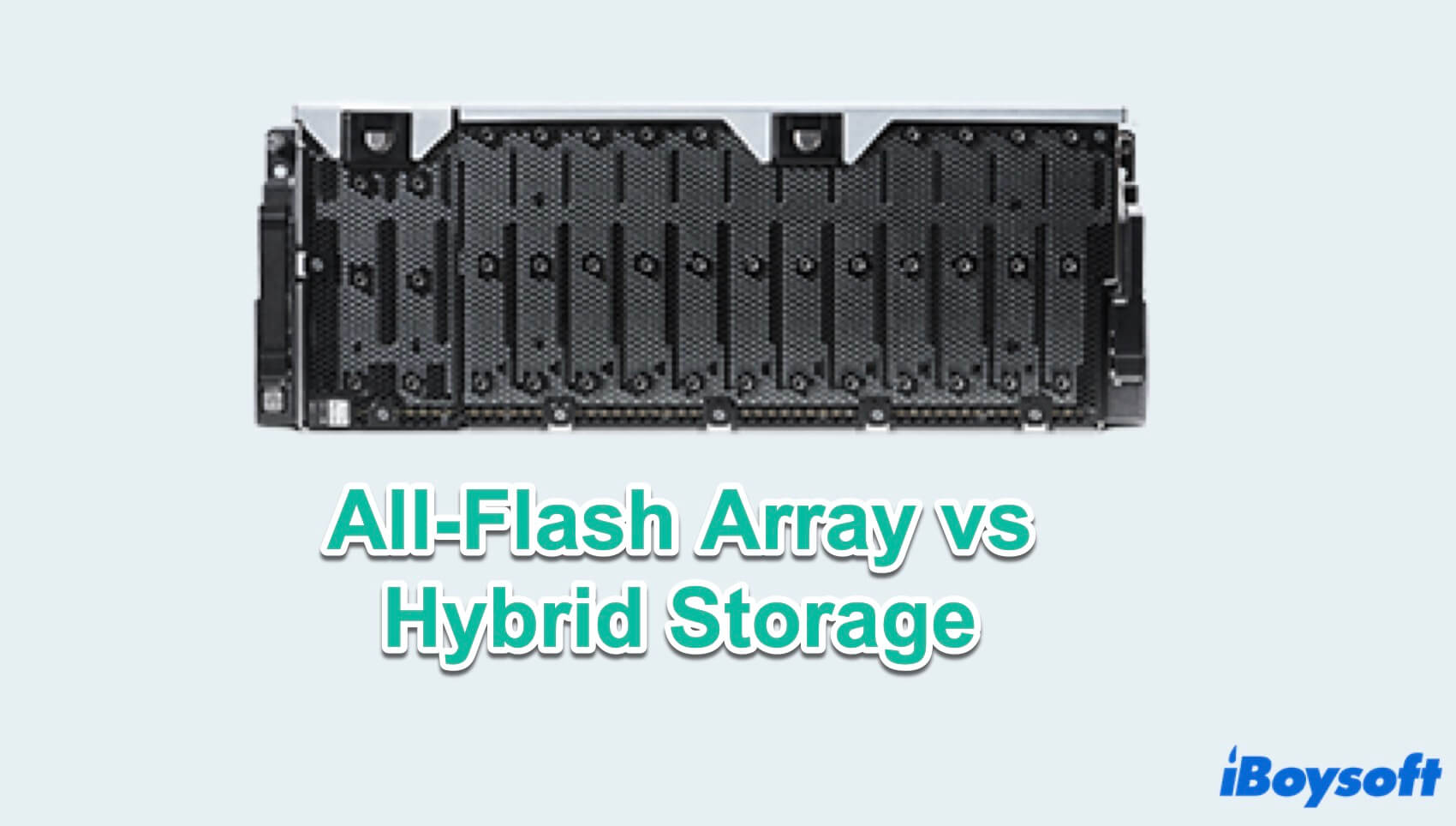All-Flash Array(AFA) also known as a solid-state storage disk system or solid-state array, has revolutionized the landscape of data storage solutions. The cutting-edge technology replaces traditional spinning hard drives with high-performance flash memory, offering unparalleled speed and efficiency.
Here we will delve into what is All-Flash Array including the key features, uses, advantages, and disadvantages, and a comparison with hybrid storage systems.
Key features of All-Flash Array
All-Flash Storage Array is characterized by its exceptional speed, reliability, and scalability. Let's see the main features below:
- High performance: AFAs are known for their exceptional speed and low latency. The use of flash memory allows for faster data access and retrieval, making it ideal for applications that require high-performance storage.
- Reliability: Since AFA Storage lacks moving parts, it is generally more reliable than traditional spinning hard drives. This enhances the overall stability and durability of the storage solution.
- Scalability: All-Flash Array is designed to scale easily to accommodate growing storage needs. This function allows organizations to expand their storage capacity without sacrificing performance.
- Ease of management: AFA Storage typically offers advanced management features, including monitoring, analytics, and reporting tools, to simply the administration.
If you like this post, share it with your followers. Let's move to the usage of AFA Storage.
Use of All-Flash Array
All-Flash Array finds a wide range of applications across various industries and use cases due to their high-performance characteristics. Here are some common usages of it:
- Enterprise applications like databases, customer relationship management systems, and enterprise resource planning software...
- Big data analytics
- Online transaction processing(OLTP)
- Cloud storage services
- Backup and disaster recovery
- Healthcare IT and scientific research
- Media and entertainment
So what are the weaknesses of the All-Flash Array?
Benefits and downsides of All-Flash Array
The adoption of All-Flash Array Storage comes with a myriad of benefits. The foremost advantage is the remarkable speed, resulting in faster application response times and improved user experience. AFA also reduces power consumption and physical space requirements due to its compact and energy-efficient design.
However, it's crucial to consider the cost factor, as AFAs tend to have a higher upfront investment compared to traditional storage solutions. Moreover, AFA may still have limited capacity and raised concerns about its endurance. Last but not least, AFA Storage may not be the most cost-effective solution for all types of data storage needs.
In summary, while All-Flash Arrays offer numerous advantages in terms of performance and reliability, organizations should carefully consider their specific requirements, budget constraints, and the nature of their workloads before deciding to adopt this technology.
All-Flash Array vs Hybrid Storage
AFA storage stores data on Solid State Drives(SSDs) rather than Hard Disk Drives and Hybrid Flash Storage is a networked mix of both HDDs and SDDS.

The result of All-Flash Array vs Hybrid Storage comes down to one thing: What do you consider the cost or the performance? Let's see a table:
| Pros | Cons | |
| All-Flash Array | High performance; Data efficiency; Simplicity | High cost; Limited capacity; Endurance concerns |
| Hybrid Storage | Cost-effective; Versatility; Scalability | Complexity; Performance limitations; Potential for bottlenecks |
The choice between All-Flash Array and Hybrid Storage depends on factors such as budget constraints, the nature of workloads, and performance requirements. You should carefully assess your specific needs to determine which solution aligns best with your priorities and goals.
Final words
In conclusion, the introduction of All-Flash Array Storage has transformed the way organizations manage and process data. Understanding its key features, diverse applications, benefits, downsides, and a comparative analysis with hybrid storage systems is essential for making informed decisions in the ever-evolving landscape of data storage solutions.
